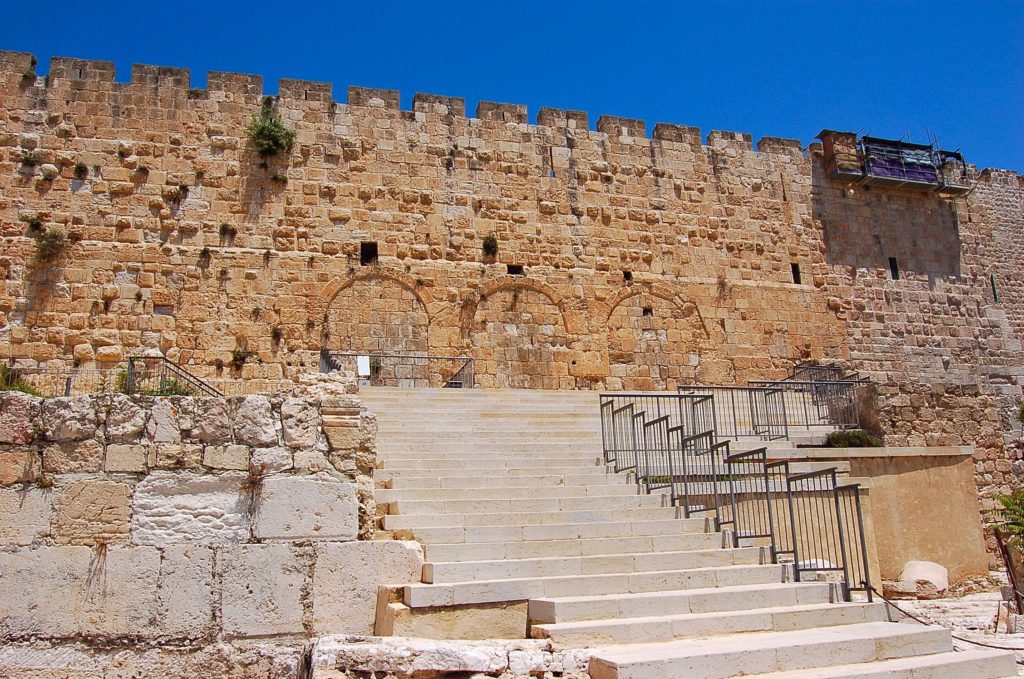
According to the Bible, Jesus taught in Jerusalem’s Temple courts during the week before his crucifixion. Even though the Temple and its courts are long gone, you can still climb the steps he used to reach them.
In 19 B.C., Herod, the King of Judea, undertook an enormous expansion of the Jewish Temple, then on a flat hilltop across the Kidron Valley from the Mount of Olives. Workers first surrounded the hill with a trapezoidal-shaped retaining wall more than 1000 feet long on each side. The wall, rising about 100 feet above street level, was assembled from precisely cut stone blocks. The enclosed space around the hill was then filled and leveled, creating a platform called the “Temple Mount,” supporting the greatly enlarged Temple and a series of open courts. Tunnels within the filled area extended from gates in the walls to stairs leading out to the 35-acre platform, able to accommodate 100,000 people.
Temple visitors other than priests entered and exited the platform through the five Huldah Gates in the southern wall, likely named for their mole-like tunnels. The Triple Gate to the east was ordinarily used for entering and the Double Gate to the west was used for exiting. The order was reversed during periods of mourning. Massive staircases below the gates included irregularly-sized steps intended to cause climbers to look down as if in prayer.
Roman troops destroyed the Temple and its courts during the First Jewish Revolt in 70 A.D. When the Muslims built the Al-Aqsa Mosque near the southern end of the Temple Mount in the eighth century, they closed the Huldah Gates. But the Triple Gate’s arches are still present, as are both original and reconstructed steps leading to them. If you want to walk where Jesus walked, the southern steps of the Temple Mount are a sure thing.